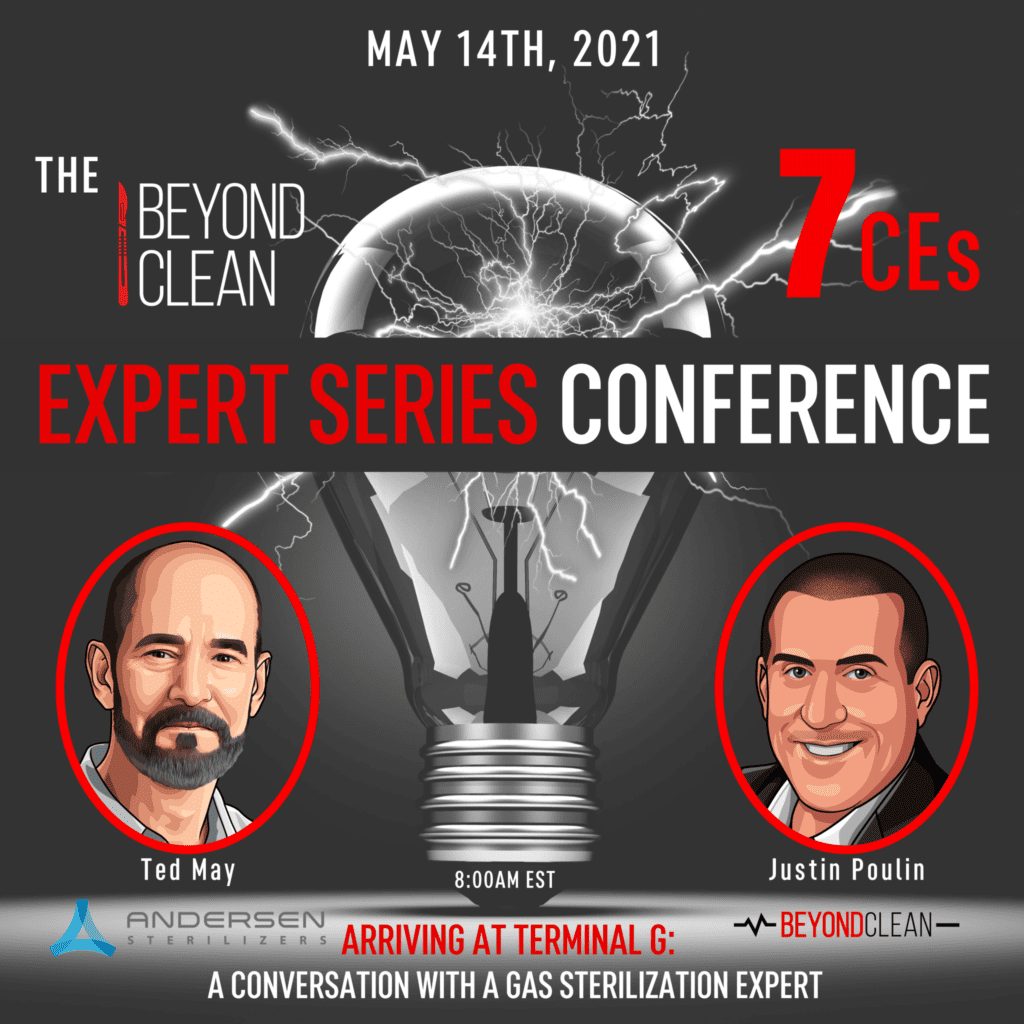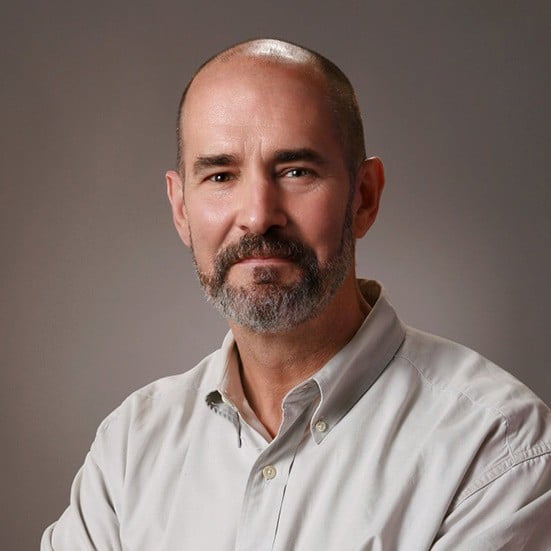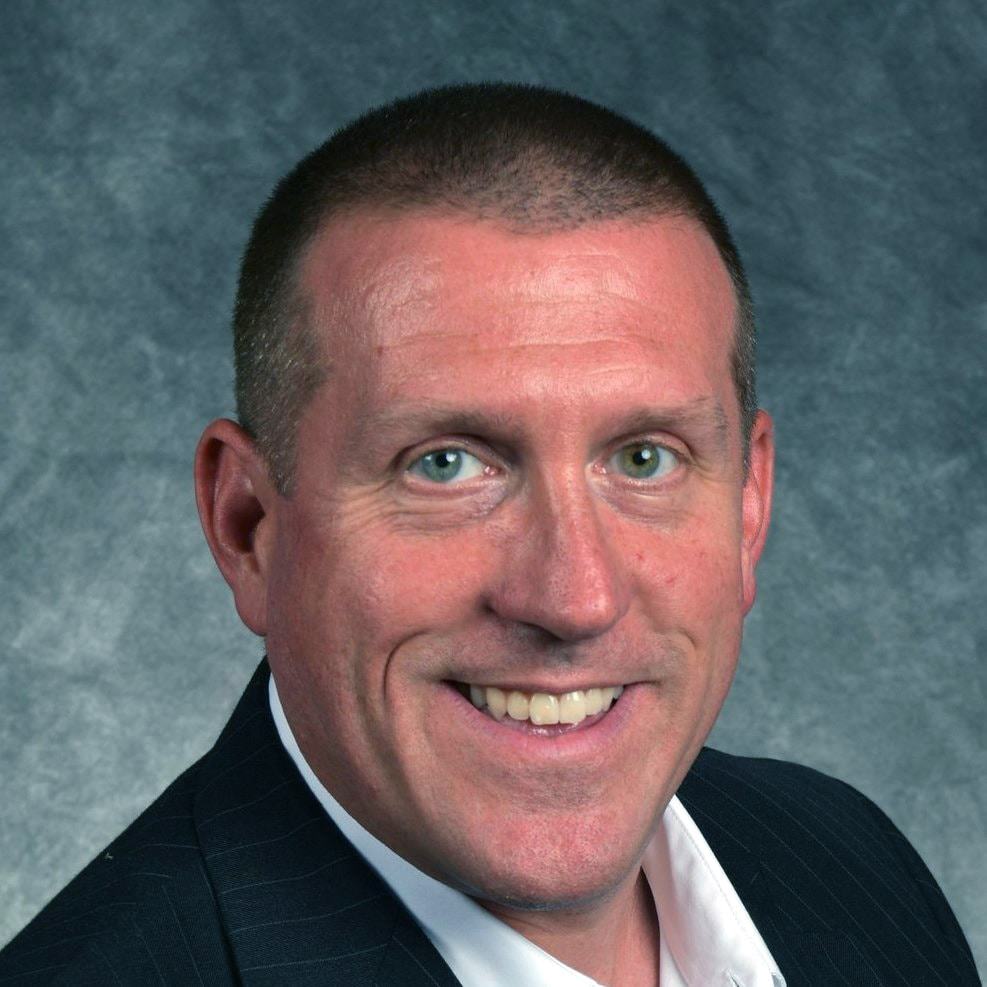
An intensely honest conversation about ethylene oxide sterilization
Andersen & Beyond Clean talk it out
Andersen Sterilizers News | MAY 19, 2021
Is ethylene oxide (EO or EtO) more toxic than hydrogen peroxide? What are the most prevalent myths about EO in the industry today? What does the future of EO look like?
Andersen’s President and CEO, A.E. (Ted) May joined Beyond Clean’s Justin Poulin for an intensely honest conversation about gas sterilization as part of the “2021 Expert Series Conference” held on May 14, 2021.
In typical Beyond Clean fashion, Poulin asked the tough questions regarding the history surrounding EO and its role in the future of hospital sterile processing departments, specifically around duodenoscope and endoscope reprocessing.
Every month, Andersen’s Ted May explores topics like safety, history, emissions and even molecular science related to medical device gas sterilization. These articles are published as part of Beyond Clean’s “Expert Series”—articles written by medical experts tackling some of the most pressing issues facing Sterile Processing departments.
Beyond Clean is the global voice for sterile processing, connecting individuals through innovative and disruptive platforms such as podcasting, social media and new technology.
Directly following the conversation, Ted participated in a question and answer session with viewers.
A few quick notes before we get started:
- Below is just the highlights reel.
- See the full video here.
- If you want CE visit here INSTEAD.
- Click on the question to the right that interests you most to skip right to that point in the video.
- If you click on the timestamp after any question below, it will take you directly to that point in the video.
“I would take this a step further, if I may, the hydrogen peroxide systems that most hospitals are using now were developed in the 1980s, they were cleared by FDA in the ‘90s – this is now 30-year-old technology. The latest Andersen systems, the latest ethylene oxide systems, were cleared by FDA two years ago. You tell me, which is the newer technology? Which is the 21st century method?” (19:44)
– Ted May, Andersen CEO
Skip to:
Justin Questions:
- Why did you choose the gas sterilization industry?
- What does “gas sterilization” mean in healthcare?
- Are device manufacturers and equipment manufactures talking to one another so we don’t get conflicting IFUs?
- Why do you like to compare car and sterilizer gas efficiency?
- Where does gas sterilization play a part in superbug outbreaks?
- What are your thoughts on chemical monitoring?
- What are some myths about gas sterilization still prevalent in the industry?
- What does the future for gas sterilization look like?
- How are you innovating in response to that?

Ted May
Andersen
President & CEO

Justin Poulin
Beyond Clean
Founder & CEO
1. You’re passionate about gas sterilization, you’re extremely knowledgeable, you’re very involved at multiple levels throughout the entire industry – not just at your own company. What really drew you to gas sterilization and drove your passion for this industry? (1:41)
“I think this is critically important to understand what’s happening in our industry and the things that are driving our industry. I’ve had the great opportunity to participate not only in national committees but in international sterilization forums. I’ve been on a number of FDA panels. During the anthrax attacks, I was part of a White House committee looking at the response to bioweapons.”
2. When we say ‘gas sterilization,’ what does that mean in terms of the healthcare context? (7:27)
“Historically, when you talk about gas sterilization, you’re talking about ethylene oxide, formaldehyde, ozone and maybe chlorine dioxide. These are the true gas sterilization methods. Hydrogen peroxide is typically considered a liquid chemical. It has a very high boiling point, it is over 300° F. So to create a hydrogen peroxide vapor, or what they call a ‘gas,’ you have to pull a very deep vacuum. While it’s called a gas sterilization process, I think that ethylene oxide is the only true gas sterilization method in the healthcare setting.”
3. Is there a conversation going on between the device manufacturer and the manufacturer of the equipment that reprocesses, sterilizes or disinfects the equipment? (9:49)
“FDA’s requirements and expectations tend to evolve and increase over time so if you have a clearance you want to sit tight. So manufacturers will often times issue guidance outside of the IFUs, supplemental guidance. It’s a little different when you’re talking about new devices. Increasingly, we’re working with a lot of medical device start-ups, companies with innovative technologies that do come to us early in the process. They want to see, number one, is the device compatible with ethylene oxide, how effectively can it be sterilized. We wish that more companies were doing that.
At the regulatory meetings, there’s a regular parade of sterilization manufactures going up to the device manufactures and asking, ‘Please, could you talk to us earlier in the process!’ I suspect there is going to remain a happy tension there, for the time being.”
4. So, this is the Expert Series Conference and I do want to point out one of your recent articles on the Expert Series where you talked about gas efficiency. Tell us more and introduce the audience to that concept if they didn’t read your article and also, really clarify why this concept of gas efficiency is and should be very important to sterile processing professionals. (15:35)
“A lot of the objections to EO regard a system and a process that doesn’t exist anymore. Those systems are all off the market, hospitals are not using them. We like to talk about ethylene oxide compared to cars.
Justin, if you came to me and said, ‘You know, I’m anti-car. Because, you know what, ’57 Chevy’s they were not safe. Didn’t have airbags, no ABS, for God’s sake they didn’t even have seatbelts. The ’57 Chevy, it’s dirty. It didn’t have catalytic converters. It’s polluting to the environment and it only got 10 miles to the gallon. I don’t like cars. It’s a bad technology.’ If someone came to you and tried to make that argument, you would politely point out, ‘sir, uh, no one is selling’57 Chevys anymore. Let’s talk about the modern hybrid. Let’s talk about hybrid technology 50 miles to the gallon, modern crash test technology.’ It would be a very different conversation.
“I would take this a step further, if I may, the hydrogen peroxide systems that most hospitals are using now were developed in the 1980s, they were cleared by FDA in the ‘90s – this is now 30-year-old technology. The latest Andersen systems, the latest ethylene oxide systems, were cleared by FDA two years ago. You tell me, which is the newer technology? Which is the 21st century method?”
5. One of the hottest topics in healthcare prior to the pandemic was superbugs and outbreaks. So I wondered if you could tell us, as it relates to superbugs and outbreaks, where does gas sterilization play a part? (21:07)
“The key thing that a lot of people don’t understand about the 2015 outbreaks is that when the FDA and other investigators looked into it, people were doing things correctly. They were reprocessing according to the IFUs, the equipment was working, people were following instructions – you couldn’t blame this on operator error. They were using high-level disinfection and the bugs were surviving. And that’s when the FDA scrambled and released their four supplemental measures. One of these supplemental measures was ethylene oxide sterilization.”
6. What are your thought on the role that chemical monitoring should play in gas sterilization and if you want to say all forms of sterilization, by all means, take it there as well? (27:01)
“Hospitals, healthcare facilities have a responsibility to protect their employees from known hazards. Anyone that tells you, ‘Well, you know, we don’t have to test for hydrogen peroxide, we don’t have to test for peracetic acid.’ – is simply wrong. You are opening yourself to liability, you’re opening yourself to OSHA complaints and OSHA citations.”
7. What are some of the myths still remain prevalent in the industry today around gas sterilization? (29:57)
“It’s not fair to call it a myth. I prefer to say it’s a contentious subject: Endoscopes and the idea that high-level disinfection is good enough.”
8. I want to you paint a picture of the future for us, specifically in regards to gas sterilization. (35:41)
“As you said, the challenge of multi-drug resistant organisms is not going away. The latest data is not only concerning, it’s scary. These bugs are increasingly resistant to the antibiotics of last resort. Which means, you catch one of these and there is nothing that the hospital can do. This is really concerning the people that study this at a high level.
As the endoscope debate continues, I have a question for people in SPDs, I have a question for infection control professionals – and it’s a very personal question – and that is, if an endoscope was going to be used on your mother, was going to be used on a family member, which would you prefer – a sterile scope or one that has been high-level disinfected? If you answer that question honestly, we get a sense for the direction the industry is headed in. I think that is something that is going to resonate over the next couple of years. And if that question doesn’t resonate, I hate to say it, but some of the lawsuits that are developing from some these infections are also going to drive this process.”
9. What is the focus of innovation (in sterilization) today, based on that anticipation of where we’re headed? (41:12)
“I’ll say this as a manufacturer of a modern ethylene oxide system, none of (the new alternative sterilization technologies coming out) has the track record and the proven reliability of ethylene oxide. None of them have the full range of compatibility with different materials that ethylene oxide has. To a certain extent, none of them have the track record of mitigating potential risk. Ethylene oxide has been around for 50-60 years. We know how to protect employees. We know how to reduce emissions to the environment.”
Audience Question & Answer Session
Q. Is EO sterilization still in use by hospitals up to this day?
A. “Absolutely, yes. The latest data I’ve seen is that about 10% of acute care facilities have access to gas sterilization.”
Q. What is the average cost for a new EO system for a facility that has never had one?
A. “I can only speak for the Andersen Systems and our tabletop sterilizers—you can buy one with our emissions abatement equipment for under $50k. It’s going to be about $50k installed. If you go into a hospital SPD, the one thing that no one has enough of is room. Space is at a premium. (Andersen sterilizers) are systems that will fit into a corner, they’re easy to install, they don’t have the big service room, you don’t have separate tank storage. They are inexpensive and space efficient.”
Q. Are there alternatives to ethylene oxide?
A. “I think that the modern SPD is going to have a bank of autoclaves (can’t get along without them) they are going to have washer disinfectors, they are probably going to have a short-cycle hydrogen peroxide system and, increasingly for their most critical instruments and perhaps for their most vulnerable patients, they are also going to have a gas sterilizer.”
